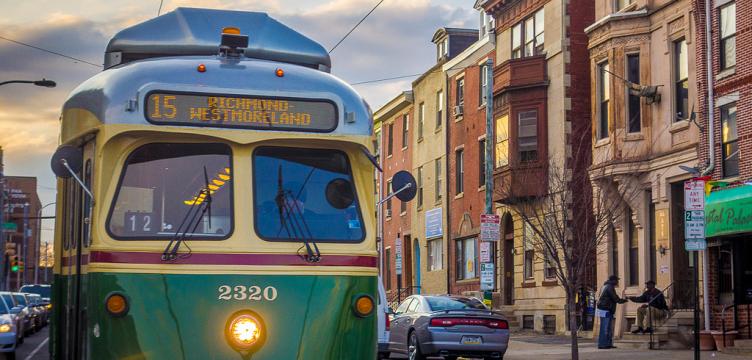PlanPhilly published a story Monday looking at the diffuse and overlapping responsibility assignments for Philadelphia, Pennsylvania’s streets.
It’s a long read, but here’s the Reader’s Digest version:
- There are 9 government or quasi-governmental agencies responsible for the streets (plus a few dozen private entities): Philadelphia Streets Department, PennDOT, the Philadelphia Parks and Recreation Department, the Delaware River Port Authority, the Philadelphia Industrial Development Corporation, the Pennsylvania Housing Authority, Philadelphia International Airport, the Burlington County Bridge Corporation, and SEPTA.
- On top of that, responsibility gets split again, with SEPTA responsible for the pavement over trolley tracks (even those buried ages ago) and the Philadelphia Streets Department responsible for sidewalks on PennDOT’s state routes.
- And on top of that, there are dozens of utilities, private companies, registered community organizations and others with other rights to, interests in, and responsibilities for the streets and sidewalks.
It’s kind of a mess and it makes intergovernmental cooperation and coordination extremely important.
That article only barely touched upon the city’s various streetscape improvements—things like benches, street lamps, trash containers and parking kiosks—that also make up our streets. There are a ton of things, and cataloguing them all and identifying the various agencies responsible for them all probably would have driven me batty.
Thankfully for those who were wondering about the streetscape and my tenuous grip on sanity, the Center City District has done this for us in its most recent quarterly digest.
If a streets project wants to use federal funds, then it usually needs to seek approval from the DVRPC, unless it can apply directly for a specific grant. Removing a lane from the cartway means a City Council vote. Almost every change of consequence means months or even years of planning sessions among all the stakeholders named so far, plus neighborhood associations and commercial district corporations.
And it doesn’t help when many of the actors involved have completely unrelated missions. The Water Department doesn’t really care about traffic on your street when it has a century old sewer to replace.
When Philly’s leaders managed to work together, impressive results followed; when they couldn’t, the city suffered. These possibilities come and go everyday without notice, but a few dramatic examples highlight what’s at risk, like the proposal to cap I-95 to provide better access to the Delaware waterfront.
Economic consultants estimate that covering I-95 with a park near Penn’s Landing would generate $1.8 billion in economic growth for a cost of $250 million. Assuming the forecasts aren’t horrifically wrong, burying the highway is the only economically rational decision.
If the cap-or-no-cap decision – and all the costs and benefits it would generate – rested in the hands of just one entity, it would happen. A private company that was offered a 7.2X return on investment like this would find investors and lenders. But like so many other streets, there are multiple interests at play here, and multiple decision makers who all need to get on the same page.
See original article on who owns Philly’s streets + photo credit.
See July 23, 2015 article detailing the revitalization challenge.

